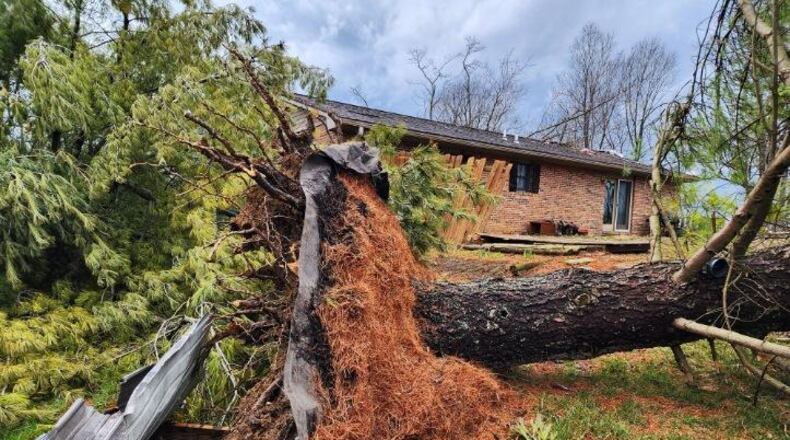Potent low pressure and a cold front will provide the focus for severe thunderstorms on Wednesday. Best window for severe storms will be Wednesday afternoon and evening. Stay weather aware! pic.twitter.com/Pp1h5HuQZW
— NWS Wilmington OH (@NWSILN) April 4, 2023
2023 weather so far
This year has featured unusually warm weather, heavy rainfall that caused flooding issues and even a couple tornadoes in the area.
Dayton set eight weather records this year, mostly for daily high temperatures.
The warmer weather and records set are likely due to climate change, said meteorologist James Gibson from the NWS Wilmington office, which brings “more variability in the weather” and leads to more weather extremes.
Following the fifth-warmest January on record, February was the third warmest in Dayton, with a record three days that reached 70 degrees or higher since records have been kept for the region starting in June 1893.
High temperature records either broken or tied happened:
June 3: 57 degrees
Feb. 9: 67 degrees
Feb. 15: 71 degrees
Feb. 22: 70 degrees
Feb. 23: 70 degrees
March 1: 75 degrees
A daily snowfall record was set Jan. 25 when 5 inches fell in Dayton, and the city shattered a daily rainfall record with 2.7 inches on March 3.
Active start to tornado season
Most tornadoes in Ohio happen during May, June and July, but a tornado can form at any time.
A strong storm system spawned funnel clouds — including two that touched down — on Feb. 28, and high winds knocked down trees and power lines, forcing several thousands of people to take cover.
Radar showed “tornado debris in the air” west of Middletown in Madison Twp., Butler County, the NWS reported in the first twister. The second touched down near New Carlisle in Clark County.
Both were classified as an EF1 tornado, with an estimated maximum wind speed of 110 mph in Butler County. Winds speeds reached up to 95 mph in Clark County.
Research from the National Centers for Environmental Information shows that this year is the third most active start to the tornado season on record in the U.S.
Across the U.S., there have been 300 confirmed tornadoes as of Monday, but that does not include any that hit last weekend.
Fierce tornadoes ripped through the South and Midwest on Friday and early Saturday that left major devastation and killed at least 32 people in Alabama, Arkansas, Delaware, Illinois, Indiana, Mississippi and Tennessee.
All tornadoes are dangerous, but the most violent ones can cause vehicles to become airborne, level houses and businesses, and turn broken glass and other debris into lethal projectiles. The biggest threat to people is flying debris in the wind, according to the NWS.
Spring in Ohio is definitely when tornadoes are most likely, Gibson said.
“People need to be prepared for severe weather, have a plan,” he said.
During a tornado warning — which means that a tornado has been spotted or radar shows a thunderstorm circulation — people should seek shelter immediately, ideally in the basement or an interior room without windows on the lowest floor, such as a bathroom, closet or center hallway.
‘Indicators tornadoes could be possible’
Temperatures will be far above normal for today, with a high approaching 80 degrees.
A tornado watch is in effect through 5 p.m. for Butler, Darke, Miami, Montgomery, Preble and Warren counties. This means that conditions are ideal for a tornado to form.
A wind advisory is in effect from 8 a.m. through 8 p.m. Sustained southwest winds of 15 to 25 mph with gusts up to 45 mph expected. Gusts could blow around unsecured objects, tree limbs could be blown down and power outages could result.
Thunderstorms are expected to arrive in the Dayton area around noon, moving in from the west to the east, Gibson said
The chance for severe weather, including tornadoes, comes later during the afternoon.
“They will increasingly get stronger as the temperatures rise,” Gibson said, which will make the storm system more unstable. “There’s indicators tornadoes could be possible.”
The severe threat will start to decline in the evening as the system moves out.
Southwest Ohio has a 30% probability of damaging wind, 10% for large hail and 5% probability of a tornado, according to the NWS Storm Prediction Center.
About the Author

